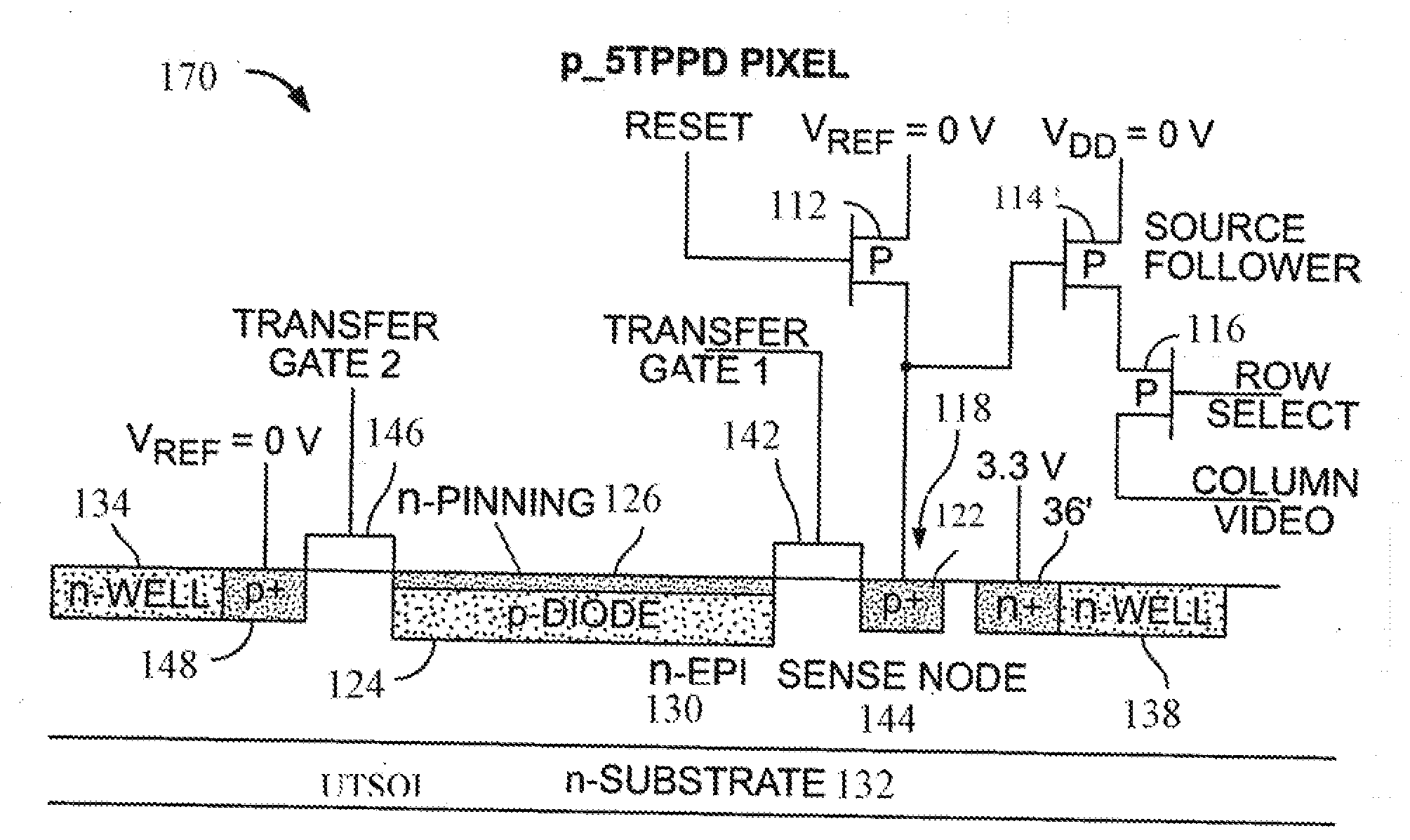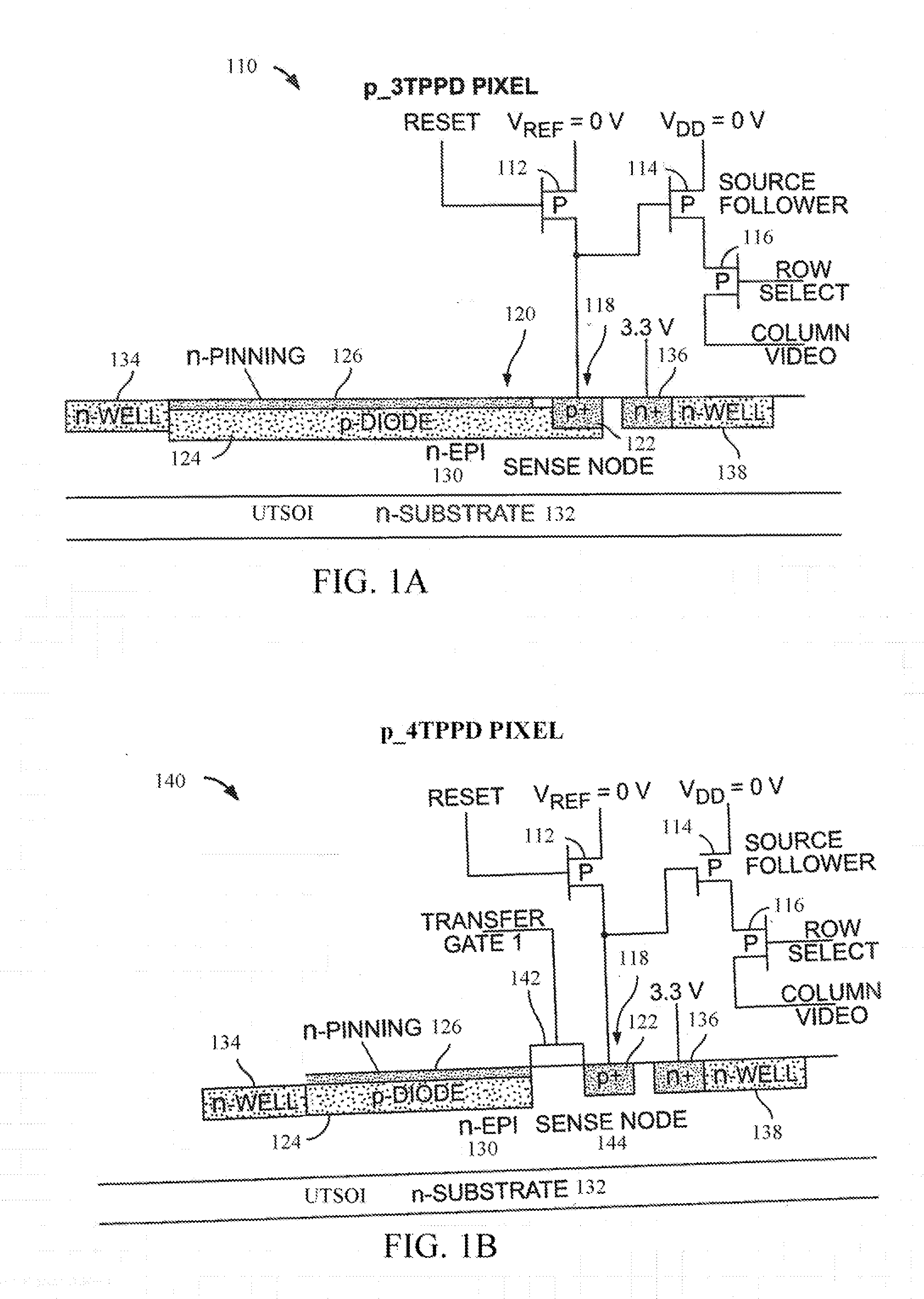P-pixel CMOS imagers using ultra-thin silicon on insulator substrates (UTSOI)
- Summary
- Abstract
- Description
- Claims
- Application Information
AI Technical Summary
Benefits of technology
Problems solved by technology
Method used
Image
Examples
Embodiment Construction
[0023]FIGS. 1A, 1B, and 1C are cross-sectional views of a p-type CMOS 3T pixel 110 (for three-transistor pixel), a 4T pixel 140 (for 3-transistor plus 1-transfer gate pixel), and a 5T pixel 170 (for 3-transistor plus 2-transfer gate pixel), respectively, according to an embodiment of the present invention. The p-type CMOS pixels are hereinafter designated as p—3TPPD, p—4TPPD and p—5TPPD pixels, 110, 140, 170, respectively (collectively referred to as p_pixels). The p—3TPPD pixel 110 includes three PMOS transistors 112, 114, 116 standing for a reset transistor 112, a source follower transistor 114 and a row transistor 116. The reset transistor 112 is electrically connected to a sense node 118. The sense node 118 is formed of a p+ contact 122 and a pinned photodiode 120. The pinned photodiode 120 includes a thin n-type pinning layer 126 overlying a custom p-diode implant 124, that in turn, overlies and forms a depletion region with an n-epitaxial layer 130. An ultra-thin silicon-on-in...
PUM
 Login to View More
Login to View More Abstract
Description
Claims
Application Information
 Login to View More
Login to View More - R&D
- Intellectual Property
- Life Sciences
- Materials
- Tech Scout
- Unparalleled Data Quality
- Higher Quality Content
- 60% Fewer Hallucinations
Browse by: Latest US Patents, China's latest patents, Technical Efficacy Thesaurus, Application Domain, Technology Topic, Popular Technical Reports.
© 2025 PatSnap. All rights reserved.Legal|Privacy policy|Modern Slavery Act Transparency Statement|Sitemap|About US| Contact US: help@patsnap.com



